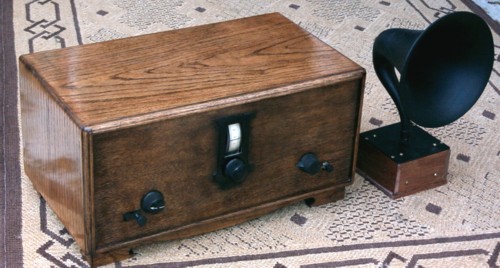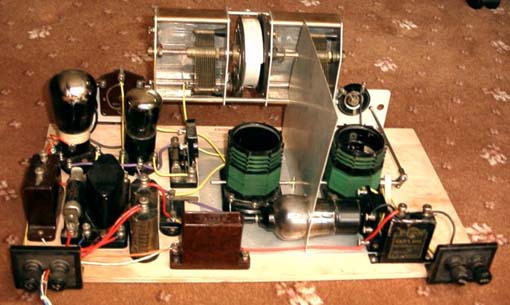|
|
, Brown Bros page of adverts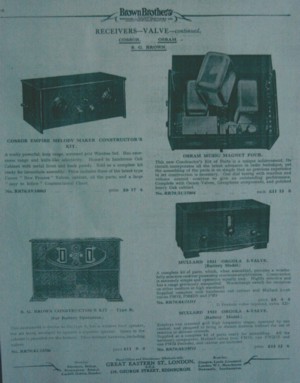
|
Orgola III Advert (bottom right adjacent.)
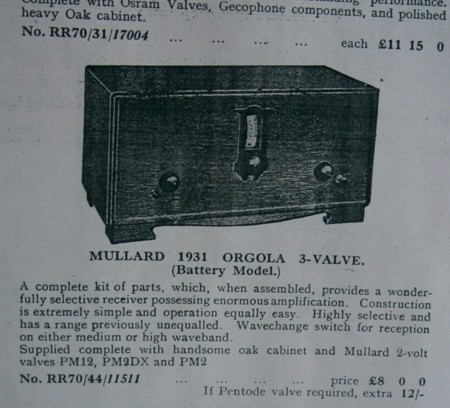
|
|
, Brown Bros page of adverts
|

|
It was not apparently the practice to supply a theoretical circuit diagram; seems they did not have much confidence in their customers technical knowledge.The adjacent circuit has been produced from the "point to point" one. It shows the minimal circuitry and the inclusion of a 5k Ferranti resistor and associated 2mfd condenser not shown on the "point to point". |
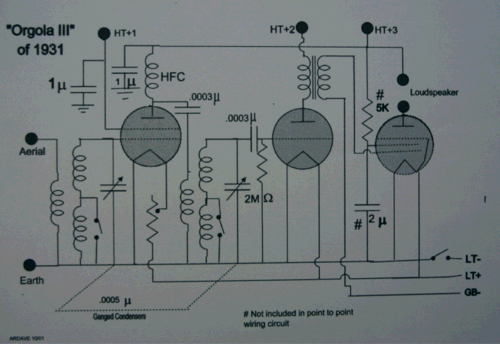 |
| The original "Point to Point" wiring diagram, with detailed instructions on the right hand side |
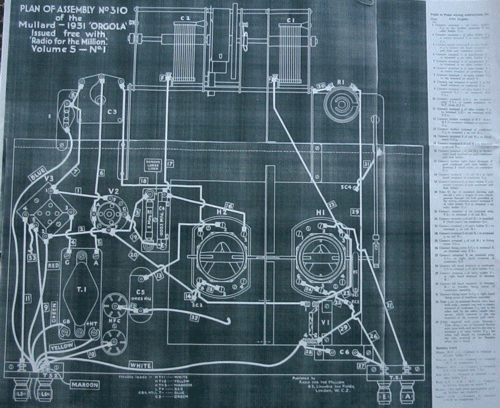 |
It was a gem of a find, having on it`s baseboard the guarantee of it`s provenance |
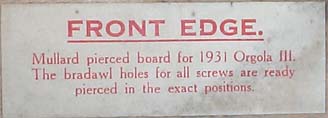 |
The grid condenser of the detector valve is a "plug in" item to the 2 megohm grid leak |
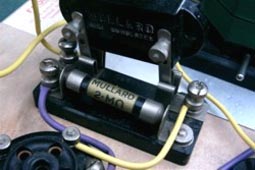 |
The rheostat in the filament lead of the Screen Grid valve; it acted as a quite effective volume control. |
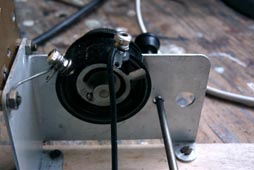 |
The bellcrank lever for wavechanging.The manually adjustable aerial coupling coil can be seen inside the main coilformer. |
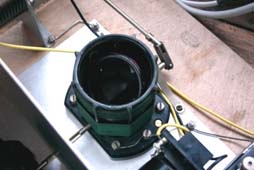 |
The tuning coils were by Colvern, the tuning condenser arrangements by Jackson Bros; valves (Screen Grid-PM12, Detector-PM2DX, Output-"Pentone"-PM22) and intervalve transformer by Mullard and the single fat wirewound resistor by Ferranti. |
